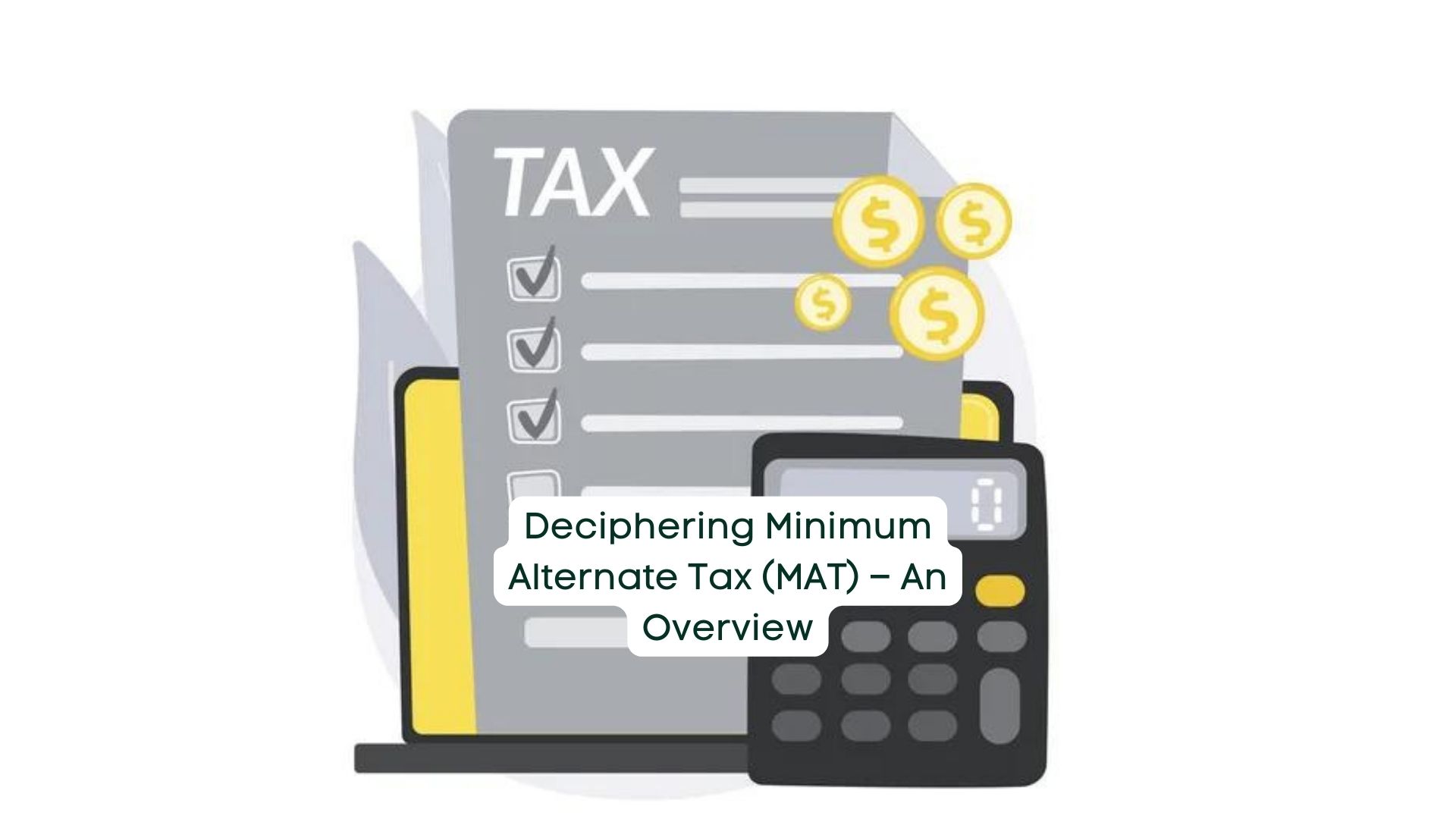
24 Feb Deciphering Minimum Alternate Tax (MAT) – An Overview

Understanding the Minimum Alternate Tax (MAT) is crucial in the context of Indian taxation. MAT is a pivotal provision in the realm of indirect taxation, obligating businesses to pay a minimum level of tax regardless of their exemptions. Instituted initially in response to a surge in zero-tax-paying entities, MAT ensures that profitable businesses contribute to the tax revenue of the nation. Let’s delve deeper into what MAT entails and its implications.
What is Minimum Alternate Tax?
Minimum Alternate Tax, abbreviated as MAT, is a statutory provision within the framework of indirect taxation. Enacted through the Finance Act of 1987, MAT was introduced to counteract tax evasion by businesses enjoying exemptions, reinstated by the Finance (No. 2) Act of 1996. Section 115JB of the Income Tax Act mandates that companies must pay either the regular tax liability or the MAT, whichever is higher. For instance, the MAT rate for fiscal year 2019-20 was set at 15% (previously 18.5%) on book profit plus applicable surcharge.
Key Features of Minimum Alternate Tax
- Advance Tax Payment: Taxpayers with a liability exceeding Rs. 10,000 for a financial year are obligated to pay advance tax, as per the Income Tax Act.
- MAT Applicability in Special Economic Zones (SEZs): Initially not applicable to income generated in SEZs, an amendment in the Finance Act, 2011, extended MAT provisions to companies operating in SEZs.
- Tax Credits: MAT payments exceeding regular tax liabilities are refunded to companies as tax credits, which can be carried forward for up to 10 consecutive assessment years.
- MAT Report: Companies subject to MAT must submit a report, Form 29B, alongside their Return on Investment (ROI).
Applicability and Exceptions of MAT
MAT applies to all companies, regardless of their nature (private or public) or origin (Indian or foreign), if their tax payable is less than 15% of book profit plus cess and surcharge. However, exceptions exist, such as exemptions for income from life insurance operations or tonnage taxation.
Understanding MAT Credit
MAT Credit refers to the surplus tax paid under MAT, which can be offset against future tax liabilities up to 15 fiscal years. Changes in regular tax rates affect MAT credits, and any excess Foreign Tax Credit passes over to subsequent years.
Significant Amendments in The Union Budget of 2022-2023
The recent Union Budget proposed reductions in AMT for cooperative societies from 18.5% to 15%, aligning them with commercial entities. Additionally, the surcharge for cooperative societies with total incomes between 1 crore and 10 crores may see a reduction from 12% to 7%.
Reporting MAT
Taxpayers subject to MAT must procure a report from a Chartered Accountant, Form No. 29C, certifying their total income and MAT computation as per Income-tax Act provisions. The report, along with the income tax return, can be filed electronically.
Conclusion
MAT stands as a mechanism to ensure tax compliance among profitable businesses, preventing them from exploiting tax exemptions. Since its inception, MAT has been instrumental in fostering a fair taxation system, wherein all entities contribute proportionately to the nation’s revenue.


No Comments